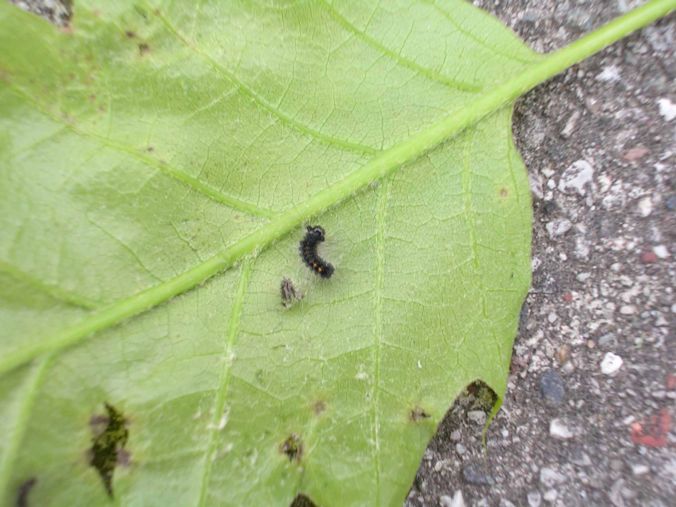In the summer months, residents may notice trees with leaf-loss due to an invasive caterpillar. This defoliation is due to the gypsy moth caterpillar, which eats leaves on oak trees and other species. As you can imagine, this causes stress to these trees, makes them more susceptible to disease, insects or environmental stresses, such as drought and may ultimately be the demise of the tree.

A female gypsy moth lays over 500 eggs in the cashmere-colored egg masses. As an indicator of the invasive insects' locations, the Forestry Section uses resident calls to scout for egg masses. Treatment is done by an aerial spray approved and performed by the Department of Natural Resources through an application process. Information gathered during the Forestry staff's field survey is used to complete this application. In December, the DNR reviews applications and approves those meeting specific criteria, including a minimum of 20 acres of damage.
Dane County leads this treatment coordination, as required by the DNR and assigns a Gypsy Moth Coordinator who hosts a public informational meeting. If an affected property owner objects to the spray treatment, they are advised to contact the Coordinator by written notification. As a courtesy, the City of Madison Forestry Section, provides a notification letter to property owners who may be affected.
The DNR's aerial spray occurs in May. Forestry's role is to assign a representative to each spray block to take weather readings, warn pilots of hazards and assist with emergency response. They also advise joggers and walkers of the impending spray, answer questions and provide an informational sheet. For more information, visit the Department of Natural Resources, Wisconsin Gypsy Moth website.
Marla Eddy
City Forester
Forestry Section
City of Madison Parks Division
